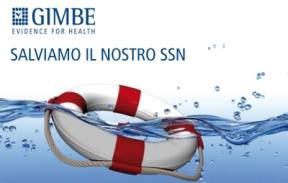All news by respiratory system pathologies
What should be the optimal duration of antibiotic therapy in community-acquired pneumonia?
The duration of optimal antibiotic therapy in community-acquired pneumonia (CAP) is still a controversial topic in the state of the art. A recent meta-analysis published in 2022 may aid in clarifying ideas.

Each year, community-acquired pneumonia (CAP) affects 0.3%-1.5% of children in western countries. The current standard treatment strategy according to international guidelines is 7-10 days of oral amoxicillin, irrespective of aetiology.
The dosage used for the treatment of community-acquired pneumonia is extremely variable and, depending on the geographical region and the bacterial resistance profiles, varies considerably, ranging from low-dose therapies to medium and even high-dose therapies.
From an epidemiological point of view in children under 5 are generally involved viruses or mixed viral and bacterial infections, after 10 years Mycoplasma Pneumoniae is the main protagonist. Regardless of age, Streptococcus pneumoniae is the most common pathogen.
There has always been disagreement over what is meant by the "optimal duration" of antibiotic treatment to treat community pneumonia in children over 6 months of age.
Although the international guidelines for this pathology, at the moment, provide for a treatment called "long therapy" (7-10 days), numerous studies are trying to highlight the potential benefits that a "short" antibiotic therapy (3-5 days) could bring.
For example, the literature tells us that the fewer days of effective antibiotic therapy, the greater the possibility of preventing the development of potential bacterial resistance by minimizing the exposure of pathogenic bacteria or normal microbial flora to antibiotics. The risk of modifying the gut microbiota or selecting resistant strains would thus be reduced.The risk of adverse events such as diarrhoea or sensitization to the drugs used, would be reduced with shorter therapies.
A meta-analysis was recently conducted to compare the efficacy of "short therapy" (3-5 days) in community-acquired pneumonia with a traditional "long therapy" antibiotic treatment (7-10 days) in children over six months.
The primary endpoint was to evaluate the potential risk of hospitalization or retreatment one month after using a "short therapy".The secondary endpoint was to evaluate the potential negative effects of antibiotic therapy and determine if the two treatment strategies (short versus long) had significant differences. According to the meta-analysis, a short duration of antibiotic treatment is equally effective and safe as long therapy. Short or long therapy had similar rates of therapeutic failure, which is the need to undergo a new treatment or be hospitalized within a month.
Regarding the occurrence of adverse events such as diarrhoea or rash, these conditions were observed in both types of treatment, although previous studies have stated that each additional day of antibiotic therapy increased the rates of antibiotic-related adverse effects (2). We are pondering the need for additional studies to better analyze this aspect due to the discrepancy in results.
A further consideration in this meta-analysis was the dosages of antibiotic therapy that are associated with the duration of the treatment. In some studies high-dose amoxicillin (80-100 mg/kg/day) was prescribed, in other studies, low-dose amoxicillin (35-50 mg/kg/day) and both dosages were applied indiscriminately to "short therapy" as well as to "long therapy".The meta-analysis demonstrated that both therapies, whether they are at high doses for long periods or at low doses for short periods, do not have profiles of inferiority in terms of treatment efficacy or secondary side effects, demonstrating the fact that a "short" therapy at low doses should also be considered in clinical practice, as it is potentially equally effective.
In conclusion, recent studies are increasingly trying to demonstrate the benefits of a "short therapy" versus a traditional therapy for CAP in children older than 6 months, in high development countries. The future objective will be to start considering this new type of treatment in clinical practice, however being supported by new and further studies that can corroborate this initial evidence and, why not, help redefine the current treatment guidelines.
BIBLIOGRAPHY
I. Kuitunen, J. Jääskeläinen, M. Korppi, and M. Renko. Antibiotic Treatment Duration for Community-Acquired Pneumonia in Outpatient Children in High-Income Countries—A Systematic Review and Meta Analysis. Clin Infect Dis. 2023 Feb 1; 76(3): e1123–e1128. Published online 2022 May 17. doi: 10.1093/cid/ciac374
(2) Curran J, Lo J, Leung V, et al. Estimating daily antibiotic harms: an umbrella review with individual study meta-analysis. Clin Microbiol Infect 2022; 28:479––90. PMID: 34775072. DOI: 10.1016/j.cmi.2021.10.022






